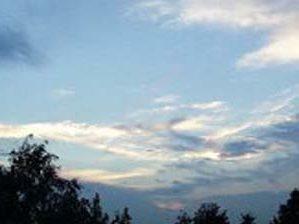
Vata dosha is the most important of all the three doshas. It is derived from a Sanskrit word “vaayu” meaning that is responsible for moving things. It is also termed as wind. In Ayurveda it is regarded vata is regarded as the subtle energy that is associated with movement. It is responsible for all the somatic activities and sensations. It controls breathing, blinking, muscle and tissue movement, pulsation of the heart, all movements in the cytoplasm and cell membranes. Vata promotes a healthy balance between the thought and emotion that gives rise to creativity and activity. When vata becomes imbalance it can create imbalance in the other two doshas. This imbalance is known as tridoshic imbalance. It also regulates the nervous processes involved with movements, thoughts, and emotions, eating, drinking, elimination and the general functioning of the body. The other supports provided by vata are :
Controls all the physical and mental movements of the body.
Transfers the sensory input from various sense organs to the brain.
Governs the process of elimination- faeces, urine, sweat, semen and fetus.
Assists the metabolism (agni) in the body.
Balanced vata is a key to good health. The various effects produced by balanced vata are :
Controlled mental activity
Normal respiratory function
Proper stimulation of digestive juices
Proper co-ordination among all body functions
Normal movements associated with eating, digestion and elimination
Excellent energy level
Controlled action of the organs of perception and the organs of action
Good energy levels
Imbalanced vata results in fear, anxiety, agitation, worry, nervousness and tension.
There are various sub-types of vata :
Prana
Udana
Vyana
Samana
Apana
Prana is the cosmic principle of movement or energy. It means life energy. The main function of prana is respiration and controls all sense organs. Prana is seated in the head and heart. It is received from the sun and is known as hot or solar prana.
Udana is located in the throat. Udana means upward movement from the naval diaphragm. It controls speech, connects us to the solar and lunar forces (sky and earth). It is responsible for spiritual development, controls psychic powers, psychic phenomena and controls creative expression.
Vyana is seated in the heart. It is responsible for the circulation of blood nutrients obtained from food to all the cells of the body. It also controls nerve and muscle action.
Samana is seated in the navel. It controls the digestion and harmonizes prana and apana. It brings all the digestive juices from the tissues into the hollow organs for digestion and metabolism.
Apana is the downward moving energy. It is seated in the colon and controls the process of elimination. It receives energy from the earth and moon. It is responsible for the action of all pelvic organs.
The various properties of vata are dry, light, cold, rough, subtle and minute moving. The large intestine is the main site of vata. The other major sites of vata are pelvic region, thighs, ears, bones and the skin.
People of vata type are the thinnest of the three humors. They tend to have dry skin and hair as the main quality of vata is dry. A person with vata predominant is blessed with a quick mind, flexibility and creativity. Vata people tend to have poor stamina. Usually people who are tall or short are vata types. They may have joints that crack or the joints protrude slightly from the skin. The hair colour tends to be dark and the hair has a course texture. People of vata types have variable appetite and digestion. They tend to produce little urine and their feaces are hard, dry and small in size and quantity. They are more susceptible to diseases such as pneumonia and arthritis. Other common vata disorders are dry skin and hair, nerve disorders, joint pain, constipation, flatulence and mental confusion.
In order to balance vata one should avoid raw foods, cold foods and extreme cold weathers. Body should be kept warm and mind should be kept calm.
